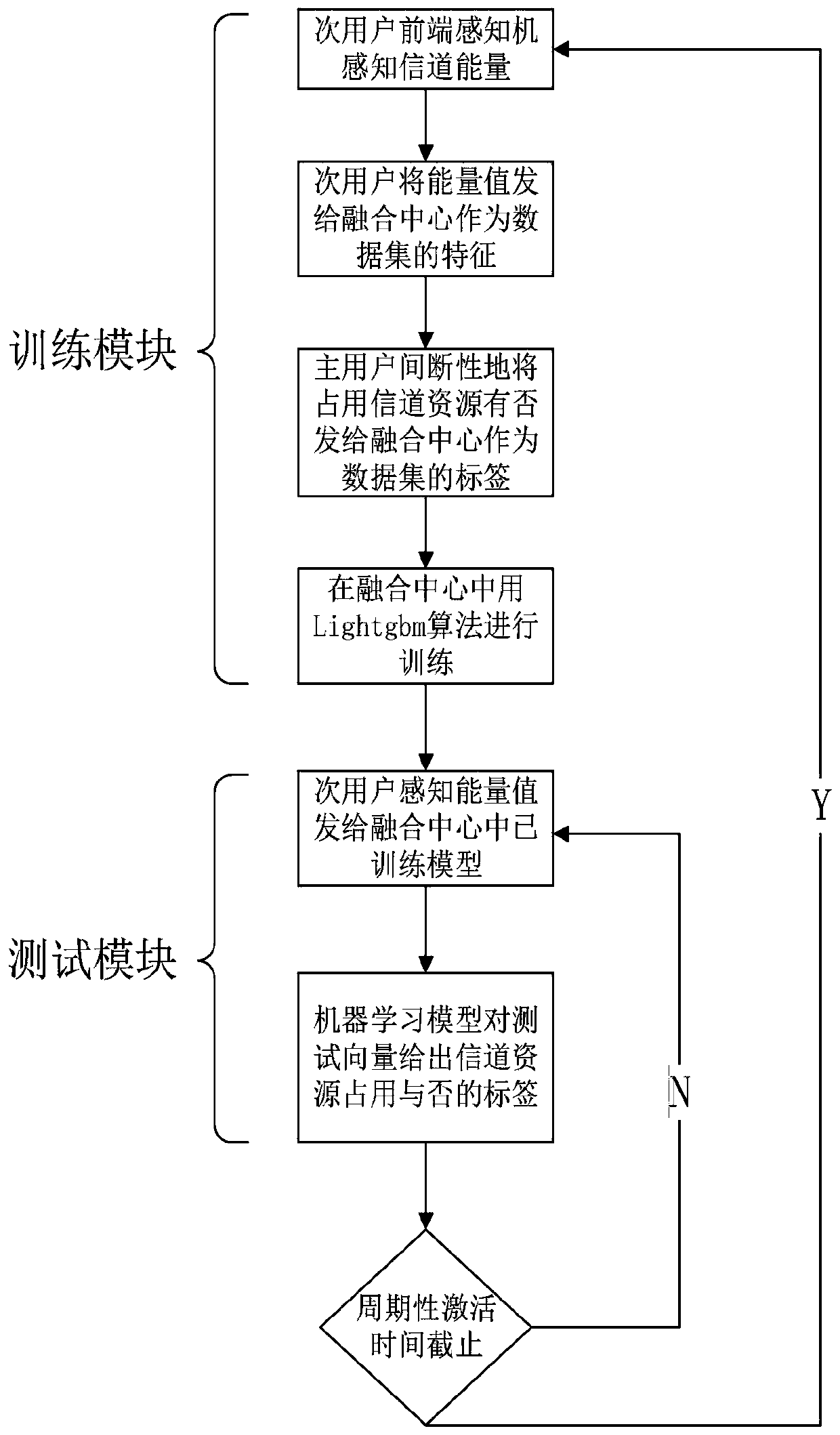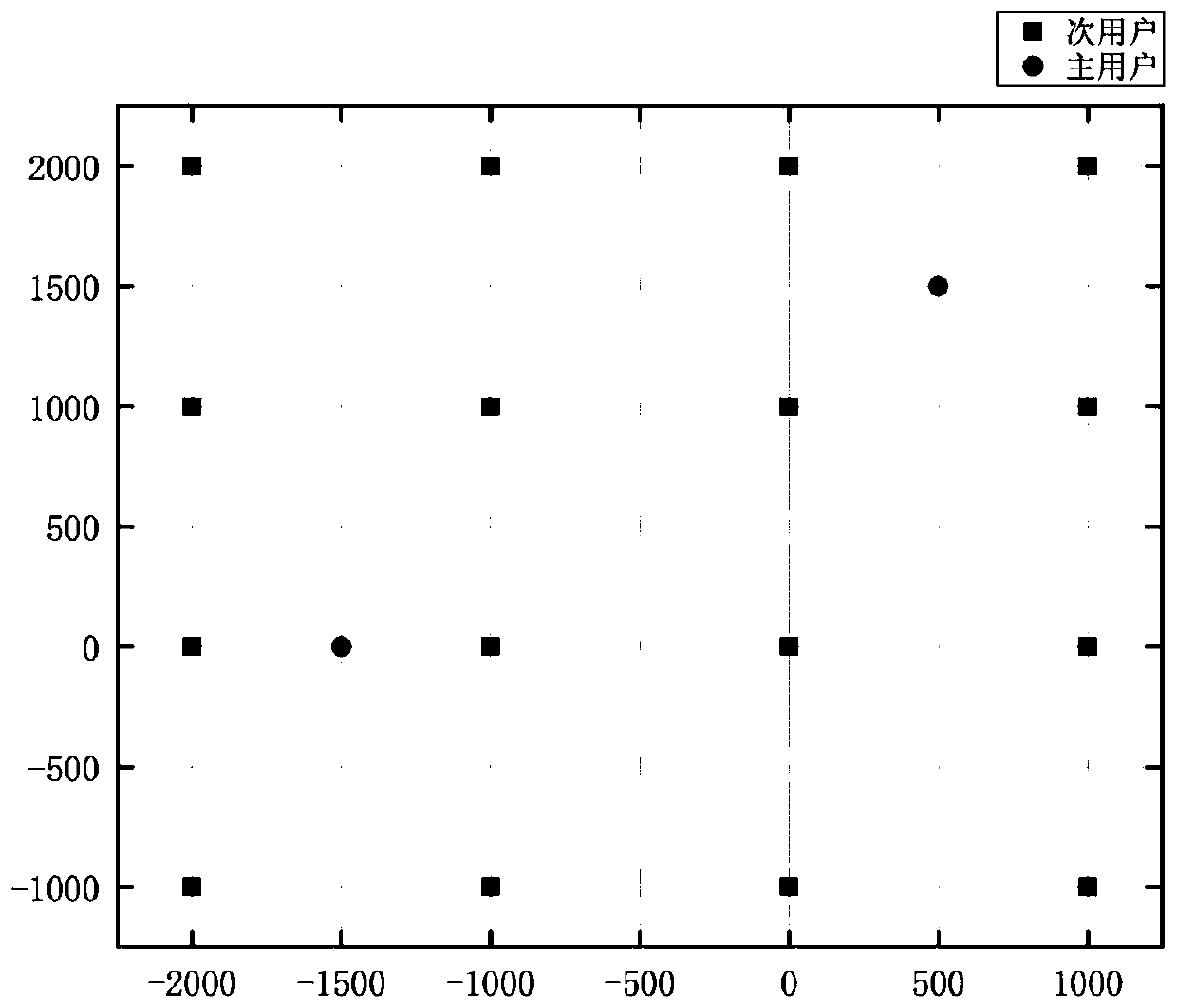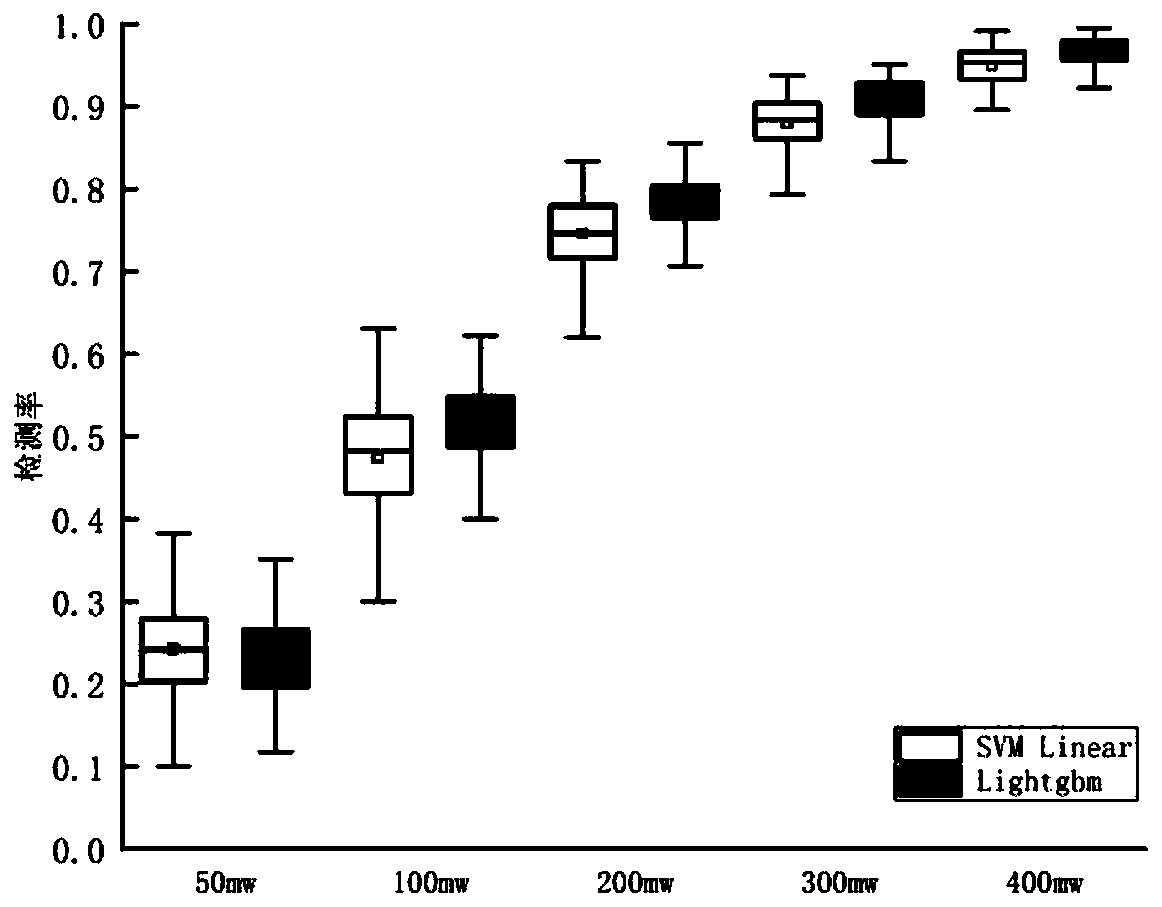Cooperative energy detection spectrum sensing method based on Lightgbm algorithm
A technology of energy detection and spectrum sensing, which is applied in transmission monitoring, electrical components, transmission systems, etc., can solve the problems of single primary user, does not take into account the topology model, and is not applicable, so as to reduce the risk of misclassification, which is of great significance. strong practical effect
- Summary
- Abstract
- Description
- Claims
- Application Information
AI Technical Summary
Problems solved by technology
Method used
Image
Examples
Embodiment
[0060] The performance comparison between the simulation experiment and the SVM algorithm verifies the usability and feasibility of the present invention based on the Lightgbm algorithm to solve the cooperative energy detection spectrum sensing problem. The present invention assumes that in the cooperative spectrum sensing model based on geographic location, there are 16 unlicensed users, and they are evenly distributed in a 4*4 grid. figure 2 There are also two authorized users in the system model, and the two-dimensional geographic locations are the coordinate positions of (500m, 1500m) and (-1500m, 0m) respectively. The simulation parameters are set as follows: the sensing period is 100, the bandwidth is 5MHz, the noise power spectral density is -174dBm, the power of each authorized user transmitter is 200mW, the path loss coefficient is 4, and the multipath fading and shadow fading coefficients are both 1. The probability of each authorized user being online is 0.5. In t...
PUM
 Login to View More
Login to View More Abstract
Description
Claims
Application Information
 Login to View More
Login to View More - R&D
- Intellectual Property
- Life Sciences
- Materials
- Tech Scout
- Unparalleled Data Quality
- Higher Quality Content
- 60% Fewer Hallucinations
Browse by: Latest US Patents, China's latest patents, Technical Efficacy Thesaurus, Application Domain, Technology Topic, Popular Technical Reports.
© 2025 PatSnap. All rights reserved.Legal|Privacy policy|Modern Slavery Act Transparency Statement|Sitemap|About US| Contact US: help@patsnap.com



